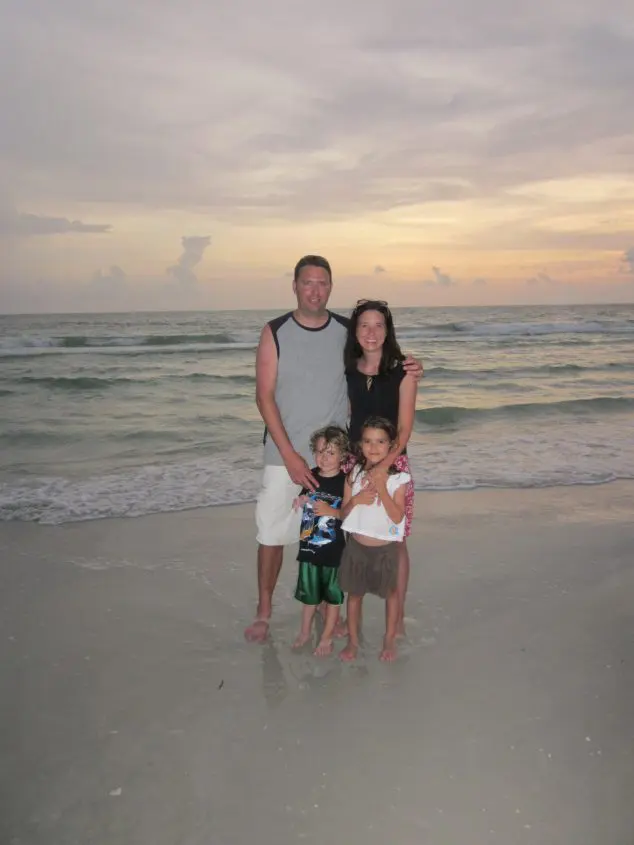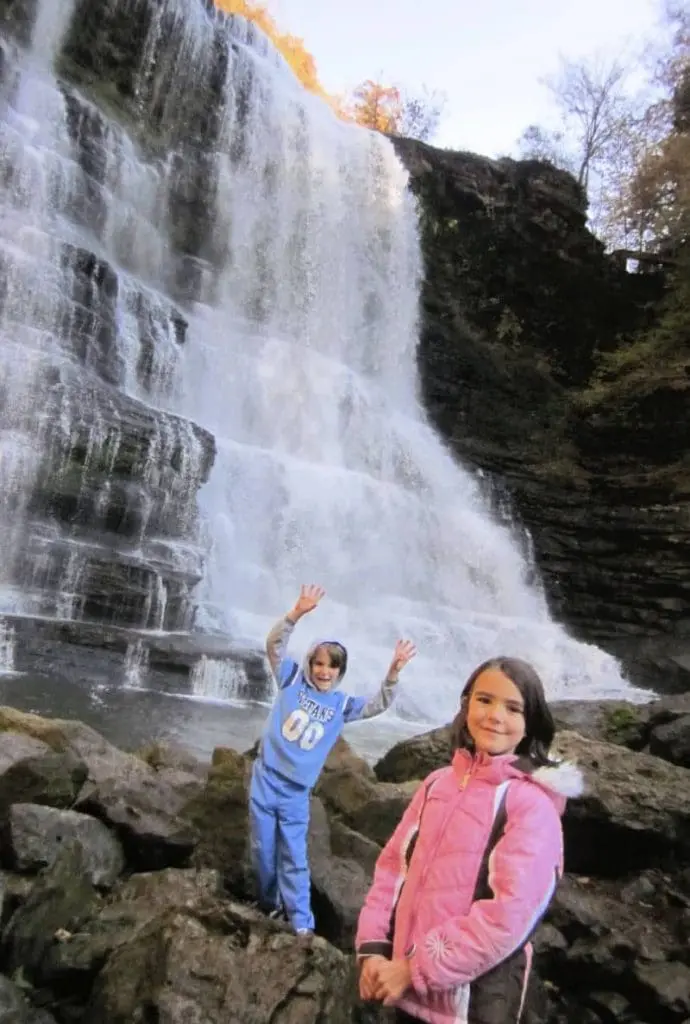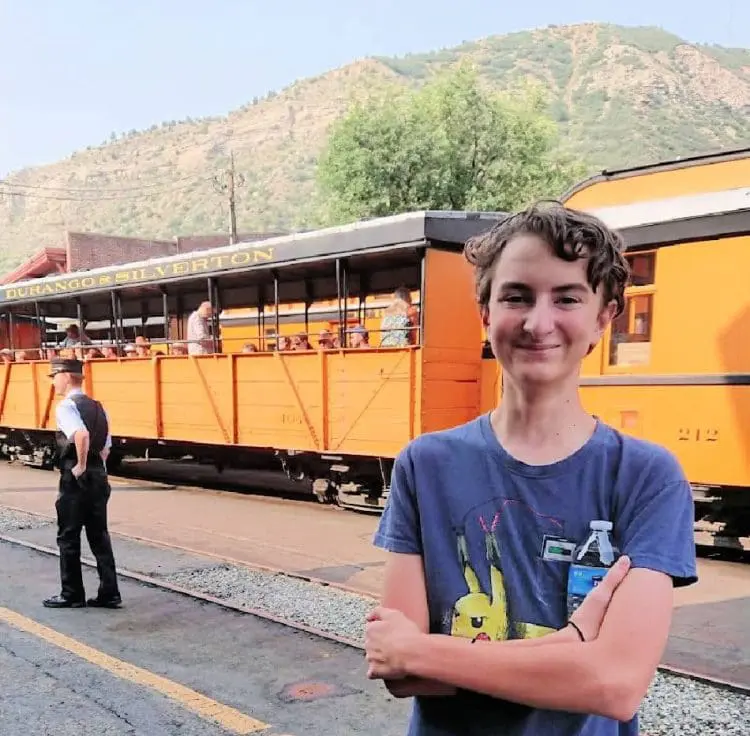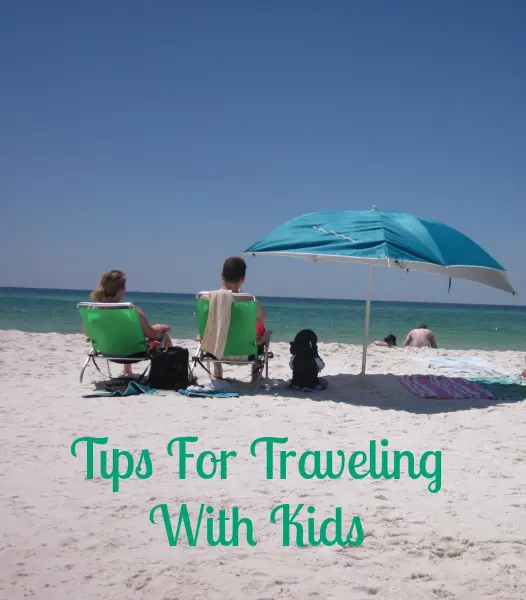People are often surprised how much we travel, even as a young family. They often ask for tips on how to travel with a family because kids can be so consuming. We find that travel gives us lots of fun things to do with kids and is great for bonding. Family travel is fun, a fantastic learning opportunity, and also an adventure full of pitfalls. Take the wrong steps and your long-sought-after vacation can easily be ruined by many things. Overpriced restaurants, seedy rooms, tourist-trap attractions, and overnight flights while crammed in the middle seat – sound familiar? Here are 51 great, time-tested tips to make travel with family easy and fun.
Expert Tips To Make Traveling With Family And Kids Easier And More Enjoyable

Why Traveling With Family Is Important
Are you looking for family travel inspiration? Just think about what aspect of travel excites you most. If you are like me and you enjoy stepping out of the daily routine for new experiences, then any new destination is always exciting. If you prefer a special place or theme parks, then there are plenty of travel adventures to be had that way too. You don’t have to have a family travel blog to enjoy life as a traveling family. Anyone can do it!
Adding kids to your travel plans can make things more complicated but with a little forethought and these tips for smooth journeys, traveling with kids can be fun and memorable! Traveling with family is such a great bonding time. It is so nice to have the time to focus on each other and enjoy something new and exciting at the same time. Travel is also a great way to introduce children to new cultures and help them appreciate diversity. A family getaway is a good time to learn new skills as well. These can be basic things like how to take public transportation or more niche like how to surf. It is a great chance to go beyond comfort zones and discover new interests.
Planning Your Family Trip
The best way to have a great trip is to start with reasonable travel plans. You may not want to start with a world trip or international destinations if this is your very first time traveling as a family. The best option is probably to create family vacation memories somewhere with direct flights! But honestly, you can have a fun family trip anywhere so do what feels right to you. A good travel experience starts with good preparation and detailed information.
1. Get user reviews of destination essentials from Citysearch.com, Yahoo! Travel and Trip Advisor, Yelp.com, FourSquare and others.
2. Join user discussion forums on Fodors.com, TripAdvisor.com, LonelyPlanet.com and Frommers.com.
3. Read a travel book about major cities or check out travel blogs and contact family travel bloggers for personal recommendations.
4. Get updates on the best hotels, attractions and cheapest options en-route via Facebook and Twitter.
5. Take out a good-sized travel insurance policy covering emergency medical expenses, baggage loss and delay, and cancellation costs.

How to Budget For Traveling With A Family
6. Evaluate foreign currency exchange rate online before traveling. You can use a currency converter to track the live exchange rate and receive alerts. For example, AUD to USD.
7. Exchange currency at post offices to avoid the commission.
8. Break down package deals using DealBase.com or kayak.com and tally your bill for individual components
Selecting Transport For Your Family Vacation
Honestly, one of the best things about road trips in the United States is the quality time you get spent together doing on the way to family adventures. Being packed the car can actually be a good thing if you prepare with snacks and a the right podcast, music, or games. Likewise, even young children can be excellent little plan or train travelers if you are prepared. A little extra effort, like using Free location tracking by iSharing to stay connected and organized, will make the family vacation itself so much more enjoyable for the whole family. Use the below tips depending on your chosen mode of transport.
Air Travel Tips For How To Travel With A Family
9. Use Kayak.com to scan data from multiple airline and travel booking sites.
10. Check DoHop.com or Momondo.com to locate flights overseas.
11. Pick the right days to travel. For example, avoid subjecting kids to red eye flights, and consider flying on Tuesdays or Wednesdays to avoid massive crowds.
12. Stretch those little legs. When the flying is nice and calm, take a minute to walk the aisle with your child. Remember how much energy they normally burn and understand it can be difficult to sit still in a plane for grownups, never mind a five year old. Be prepared with some games and activities for traveling.
13. Be sure to bring your baby wipes, creams, diapers and formula with you. Don’t put essentials in checked luggage if you’ll need them with you in seat 24E.

Car Travel Tips For How To Travel With Family
14. Make sure your car gets a thorough pre-journey inspection if you are doing a road trip. You don’t want to deal with car problems with young kids in the car!
15. Take copies of your car’s documents, drivers’ licenses, kids’ photo IDs, insurance papers and car keys.
16. If renting a car, check for the spare tire, owner’s manual, radio/CD player, tools, headlights, and A/C, GPS and windshield wipers.
17. Obtain highway safety reports from the NHTSA Online and D.O.T. Travel Safety Association Auto Safety sites.
18. Get free destination information and maps from local tourist information offices or automobile clubs.
19. Visit www.myfamilytravels.com and other sites to locate tourist spots, special events and festivals en route.
Bus and Train Travel
20. On buses, opt for the front seats for the additional leg room.
21. Carry ear plugs or noise canceling earbuds /headphones to protect your ears from unwanted noise.
22. Unless you are passing through scenic countryside, it’s best to schedule the train ride as night travel. There won’t be any potty breaks, whiny snack breaks and other nuisances.
23. Use major city train stations and travel only by direct trains when possible. This will not only bring down your fare but also reduce the hassle of transferring your family for one train to another.
24. Always book seats on new buses; old ones can creak and stop now and then on bad roads.

Family Travel Tips For Packing
Use these tips to pack right and light and to enjoy relatively stress-free travel. Get a full charge. Make sure all iPads, iPods, phones, tablets, and video games are fully charged before your trip. While you want the kids to enjoy the scenery of a road trip, giving them a little screen time can help keep them in a decent mood.
Packing Tips For Family Clothing
25. Make a list of the specific things to pack for each family member and stick to the list.
26. Pack outfits that can be mixed and matched and easily washed by hand or at local laundromats. Hotel laundry bills can be very high.
27. Don’t pack bulky pieces if you’re traveling to a cooler region. Carry plenty of lightweight, knitted pieces that you can layer.
28. Pack only wrinkle-free clothing to avoid the need for pressing clothes.
29. Pack socks and stockings within shoes to save space.
30. Limit family members to two pairs of shoes; make these the flexible ones that can be easily packed
Packing Tips For Travel Gear
31. Put all your toiletries in a transparent plastic Ziplock bag so that you don’t have to take it all out at security stations.
32. Limit luggage to one lightweight, durable, smooth-rolling wheelie bag handy backpack straps and a detachable day pack for each family member. As well as being easier to carry this makes finding storage easier if you need it. For example, Radical Storage London can hold your bags for you so you can visit the city luggage-free, but the smaller the bags, the easier it is to fit them in storage lockers.
33. Use cell phone cameras or take one slim digital camera for the entire family. Avoid carrying multiple bulky camera bags.
34. Bring a simple stroller. Inexpensive umbrella strollers area much better option than bringing your larger and fancier kid buggy. Keep it simple with a lightweight stroller that will save your back while traveling. Bring a lightweight portable car seat.
35. Take copies of your passport and other important documents in your luggage.
36. Pack a spare package of plastic Ziploc bags and trash bags in your trunk; you’ll find them handy for myriad purposes.
Packing Extras
37. Put spare first aid kit, wipes and tissues, spare toilet paper, liquid anti-bacterial soap and paper towels in your glove compartment for use in bad public restrooms. Or if you are flying, pack an extra set of clothes for your child in your carry-on so you can get junior out of his juice-soaked pants. Be prepared for the unexpected.
38. Put a flashlight, safety matches, candles, a waterproof tarp, a spare tire, repair kit, a gallon of water and blankets in your car’s trunk.
39. If you’re flying, bring your own blanket, travel pillow and entertainment and some snacks for the children. Remember the portable car seat for when you land.
Following these following tips for hotels, flights, and packing are a great way to ensure the next trip with kids goes smoothly. This will give you more time to build great memories instead of worrying about the headaches of traveling with kids.
Traveling As A Family & Selecting the Best Lodging For The Best Price
40. Even if you’re planning just a one night stay in a city, join the hotel’s loyalty program, to enjoy member extras such as free breakfast drinks, free pressing and so on.
41. Watch extra fees. Parking, Wi-Fi and other services might be free, or they might not. Parking in an urban center such as San Francisco can be $50 a night, so find a hotel that offers a parking fee deal. Check the hotel’s policy for kids to stay free. Some offer this discount for kids up to 19 years of age, while others only feature it for two year olds and younger. Check the policy to avoid a potentially expensive surprise.
42. In addition to a hotel room, check out alternative lodging options such as hostels, AirBnB, farm stays, house swaps and tourist apartment rentals. Determine which one will work best for your length of stay.
43. Stick your kids in a car or airplane for hours and they’re going to get cranky. A hotel pool can be a very inviting place to relax and burn off some pent up energy. Use the booking site’s advanced filters to make sure your selected hotel has a pool.
44. Be careful of advance booking bargains; the discount may look good, but you may have to pay in full, with no possibility of date change or cancelation.
45. Babysitting services can be what you need to get out on your own. Many resorts offer safe and engaging babysitting services that allow grownups to have some time together.
46. Look at suites. Consider the benefits of a larger suite instead of two separate rooms. A suite can be especially welcome for those traveling with little kids who can’t be left unsupervised in an adjoining room. When booking online hotel reservations make sure to request the crib or roll out cot in advance.

General Tips For How To Travel With Kids
47. No matter how much you plan, there will be disappointments, tantrums and delays. Adjust your expectations at the beginning to allow for these. It doesn’t have to be perfect to still be fun!
48. Be flexible; normal routines will change for your kids, so don’t try to make them stick to regular schedules.
49. Get friendly with the crew on flights; this can be helpful if you have fussy kids on long flights.
50. It is a good idea to let each child carry a small ‘vacation bag’ filled with games and treats of their choice.
51. Wearing cargo pants or shorts with large, long pockets is a great way to store handy things in while traveling.
Conclusion
Traveling with family can be a fun and rewarding experience! Choose a destination that suits everyone’s interests and needs. Consider the ages of your children, their interests, and any special requirements. Pack light, but don’t forget essentials like medications, snacks, and entertainment for the kids. Look for family-friendly accommodations that offer amenities like connecting rooms, cribs, and play areas. Airbnb or vacation rentals can also be great options for more space and flexibility. Traveling with family is about spending quality time together, so relax and enjoy the experience even when things don’t go as planned.
I hope these family travel tips help you feel prepared and answer your questions about how to travel with a family. The biggest thing is go ahead and plan a small family trip for the first time. Then you see how much fun it can be! Furthermore, there will be no stopping you as you find that traveling with kids is totally something you can handle and that is worth it! The perfect family vacation is within your reach. Just think of the invaluable memories you’ll make on your next trip! Where will you go for your dream family vacation? Do you have a bucket list started? Reach out on social media @familyfocusblog!
Related Post:


anton says
I like how you organized everything so well and left a lot of tips for each thing! Make sure to compare as much web-sites as possible to make sure to get the best deals for traveling with family.
Sim says
Some seriously handy tips! Have to admit that I much prefer travelling with my daughter now that she is older, not that she was ever difficult when younger, it’s just nice to realise it gets easier! Travelling as a single parent family can seem quite daunting but is easier than first thought, especially when coupled with your tips!
Stacy says
Hello.
Without a doubt, carry out a planning of the trip including the activities that you want to do, makes a much better schedule.
This allows us to go to all the places we want.
The currency exchange thing is very important.
I traveled to Argentina and I had to change the money there and the experience was not very good.
Sometimes I recommend depending on the destination, looking for a lodging that is central and close to all the places where we want to go.
Sometimes to save on stay we spend a lot on the means of transport.
It is important to evaluate all these points.
Thanks for the advice and tips, I will certainly put them into practice on my next trip. I love reading your family travel blogs and seeing what adventures you and your family get up to.
Ali says
Very useful family travel tips. I’ve found travelling with kids to be either smooth-sailing or a bit of a nightmare, so I love reading about more tips and tricks to have trips run even smoother.
The best thing in the world is family. If you go, travel and enjoy with the family, that is the world’s best thing.
Thank you
Parker says
I want to express my sincere appreciation for your incredibly comprehensive post on traveling with family. Your 51 tips cover a wide range of aspects, from planning to execution, making it an invaluable resource for families gearing up for an adventure. The practical advice, thoughtful insights, and emphasis on creating positive travel experiences for everyone involved showcase your understanding of the unique challenges and joys of family travel. Thank you for sharing your wisdom and making the prospect of traveling with loved ones not only manageable but genuinely enjoyable.
Jack says
Wow this tips are so amazing and very useful too. thanks for sharing.
Prabhu says
These are fantastic family travel tips! It’s clear you’ve experienced the joys and challenges of traveling with kids. I appreciate the emphasis on preparation and flexibility. Making those memories is definitely worth it. Thanks for sharing your insights!